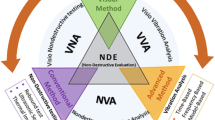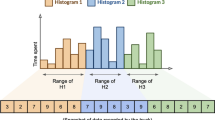Abstract
This study aims to establish a fatigue life predictive model based on multifractality of road excitations using neuro-fuzzy method to assess the durability of suspension spring. Traditional durability analysis in time domain is complicated and time-consuming due to the needs of large data amount. Thus, it is an idea to adopt an adaptive neuro-fuzzy inference system (ANFIS) for relating the performance of coil spring to the multifractal properties of road excitations, giving a meaningful fatigue life prediction. Different membership function numbers were tested to obtain the optimum membership function number. During the data training process, the checking data was used to test the trained model each Epoch of training for overfitting detection. As a result, the Morrow-based fatigue life prediction model was found to give the most suitable result with three membership functions. The SWT-based model needed five membership functions due to nonlinear properties in the SWT-based fatigue life data. Training process of Morrow-based-ANFIS was stopped at Epoch 8 given its lowest checking root-mean-square-error of 0.6953. SWT-based model recorded a higher error of 0.7940. The neuro-fuzzy models gave accurate fatigue life predictions with 96 % of the data distributed within the acceptance boundary, hence, contributing to an acceptable assessment of coil spring fatigue life based on load multifractality. This study had shown a nonlinear relationship between road multifractality and durability performance of coil spring. Multifractality had been proven an important feature to characterise various road excitations for durability prediction.
Similar content being viewed by others
References
H. Luo, M. Huang and Z. Zhou, Integration of multi-Gaussian fitting and LSTM neural networks for health monitoring of an automotive suspension component, J. Sound Vib., 428 (2018) 87–103.
Y. Zhu, Y. Wang and Y. Huang, Failure analysis of a helical compression spring for a heavy vehicle’s suspension system, Case Stud. Eng. Fail. Anal., 2(2) (2014) 169–173.
A. Altamura and D. Straub, Reliability assessment of high cycle fatigue under variable amplitude loading: review and solutions, Eng. Fract. Mech., 121–122 (2014) 40–66.
Z. R. Wu et al., Probabilistic fatigue life prediction methodology for notched components based on simple smooth fatigue tests, J. Mech. Sci. Technol., 31(1) (2017) 181–188.
T. E. Putra et al., Generating strain signals under consideration of road surface profiles, Mech. Syst. Signal Process., 60–61 (2015) 485–497.
T. E. Putra et al., The need to generate realistic strain signals at an automotive coil spring for durability simulation leading to fatigue life assessment, Mech. Syst. Signal Process., 94 (2017) 432–447.
Y. S. Kong et al., Design of artificial neural network using particle swarm optimisation for automotive spring durability, J. Mech. Sci. Technol., 33(11) (2019) 5137–5145.
L. Capponi et al., Non-stationarity index in vibration fatigue: Theoretical and experimental research, Int. J. Fatigue, 104 (2017) 221–230.
W. Quan et al., Multi-fractal analysis for pavement roughness evaluation, Procedia — Soc. Behav. Sci., 96 (2013) 2684–2691.
A. Puchalski et al., Multifractal analysis vehicle’s in-use speed profile for application in driving cycles, Eksploat. i Niezawodn. — Maint. Reliab., 20(2) (2018) 177–181.
C. H. Chin et al., Durability assessment of suspension coil spring considering the multifractality of road excitations, Measurement, 158 (2020) 107697.
M. Zhang et al., High cycle fatigue life prediction of laser additive manufactured stainless steel: a machine learning approach, Int. J. Fatigue, 128 (2019) 105194.
H. Tran-Ngoc et al., An efficient artificial neural network for damage detection in bridges and beam-like structures by improving training parameters using cuckoo search algorithm, Eng. Struct., 199 (2019) 109637.
S. Khatir et al., Improved ANN technique combined with Jaya algorithm for crack identification in plates using XIGA and experimental analysis, Theor. Appl. Fract. Mech., 107 (2020) 102554.
S. Das et al., Condition monitoring of robust damage of cantilever shaft using experimental and adaptive neuro-fuzzy inference system (ANFIS), Procedia Eng., 144 (2016) 328–335.
Y. Kong et al., Evaluation of energy-based model generated strain signals for carbon steel spring fatigue life assessment, Metals (Basel), 9(2) (2019) 213.
T. E. Putra et al., Reducing cyclic testing time for components of automotive suspension system utilising the wavelet transform and the Fuzzy C-Means, Mech. Syst. Signal Process., 90 (2017) 1–14.
K. Gadhoumi et al., Wavelet leader multifractal analysis of heart rate variability in atrial fibrillation, J. Electrocardiol. 51 (6, Supplement) (2018) S83–S87.
W. Du et al., Wavelet leaders multifractal features based fault diagnosis of rotating mechanism, Mech. Syst. Signal Process., 43(1) (2014) 57–75.
A. A. A. Rahim et al., Selection of the optimum decomposition level using the discrete wavelet transform for automobile suspension system, J. Mech. Sci. Technol., 34(1) (2020) 137–142.
P. Venkatakrishnan et al., Analysis of vibration in gearbox sensor data using Lipschitz exponent (LE) function: a wavelet approach, IFAC Proc., 47(1) (2014) 1067–1071.
Y. S. Kong et al., Generation of artificial road profile for automobile spring durability analysis, J. Kejuruter, 30(2) (2018) 123–128.
N. A. Bhatti and M. Abdel Wahab, Fretting fatigue crack nucleation: a review, Tribol. Int., 121 (2018) 121–138.
N. A. Bhatti, K. Pereira and M. Abdel Wahab, A continuum damage mechanics approach for fretting fatigue under out of phase loading, Tribol. Int., 117 (2018) 39–51.
R. C. Ugras et al., Real time high cycle fatigue estimation algorithm and load history monitoring for vehicles by the use of frequency domain methods, Mech. Syst. Signal Process., 118 (2019) 290–304.
K. VShihabudheen and G. N. Pillai, Recent advances in neuro-fuzzy system: a survey, Knowledge-based Syst., 152 (2018) 136–162.
I. Čular et al., Analytical approach for low and high cycle bending fatigue life prediction of carburized gear steel specimens, Eng. Fail. Anal., 108 (2020) 104328.
C. Zhou et al., An investigation of abnormal vibration-induced coil spring failure in metro vehicles, Eng. Fail. Anal., 108 (2020) 104238.
B. Haznedar and A. Kalinli, Training ANFIS structure using simulated annealing algorithm for dynamic systems identification, Neurocomputing, 302 (2018) 66–74.
Acknowledgments
This work was supported by the Ministry of Education Malaysia (Grant: FRGS/1/2019/TK03/UKM/01/3) and Universiti Kebangsaan Malaysia (UKM) (Grant: DIP-2019-015).
Author information
Authors and Affiliations
Corresponding author
Additional information
C. H. Chin graduated with masters in Mechanical Engineering from the Universiti Kebangsaan Malaysia, Malaysia in 2016. He currently studies Ph.D. in mechanical engineering at the same university. His research is focused on the durability of components in automobile applications and signal processing.
S. Abdullah is a Professor at the Department of Mechanical and Manufacturing Engineering, Universiti Kebangsaan Malaysia (UKM). He received Ph.D. from the University of Sheffield, United Kingdom, in 2005. His research focused on fatigue failure, FEA-based fatigue analysis fracture mechanics, damage mechanics, fatigue data analysis, signal analysis and mechanics of materials engineering design.
S. S. K. Singh is a lecturer at the Department of Mechanical and Manufacturing Engineering, UKM, Malaysia. He received his Ph.D. in mechanical engineering from UKM in 2016. His research interests include reliability engineering, damage mechanics, fatigue data analysis, fatigue failure, structural integrity and durability analysis.
A. K. Ariffin is a Professor at the Department of Mechanical and Manufacturing Engineering, UKM. In year 1995, he received his Ph.D. from University of Wales Swansea. His specialty is in the computational method in engineering under the area of powder mechanics, fracture mechanics, friction, corrosion, finite element/discrete element and parallels computations.
D. Schramm is a Professor and Head of the Chair of Mechatronics at the University of Duisburg-Essen. He received his Ph.D. in Engineering in 1986 at the University of Stuttgart. His researches focused on vehicle dynamics, driver assistance system, vehicle simulators, mechatronic components, and robotics machines.
Rights and permissions
About this article
Cite this article
Chin, C.H., Abdullah, S., Singh, S.S.K. et al. Neuro-fuzzy fatigue life assessment using the wavelet-based multifractality parameters. J Mech Sci Technol 35, 439–447 (2021). https://doi.org/10.1007/s12206-021-0102-6
Received:
Revised:
Accepted:
Published:
Issue Date:
DOI: https://doi.org/10.1007/s12206-021-0102-6




